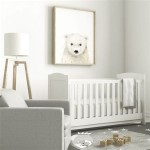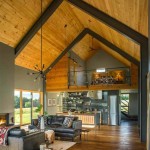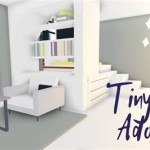How to Decorate Around a Half-Wall Room Divider
Half-wall room dividers offer unique design opportunities, acting as both functional space separators and potential focal points within a room. They provide a sense of division without completely closing off areas, fostering a feeling of openness and connection. However, decorating around these architectural features requires careful planning to maximize their aesthetic appeal and practical functionality. This guide provides insights into leveraging the potential of half-wall room dividers and effectively integrating them into interior designs.
Define the Purpose of the Divider
Before embarking on any decorative endeavors, the intended purpose of the half-wall room divider must be clearly established. Is the primary goal to delineate distinct zones within a larger space? Are there specific activities that need to be separated, such as a living area from a dining space, or a home office from a bedroom? Understanding the function clarifies the optimal design approach. A divider separating a living room from a kitchen might benefit from a bar-top or open shelving; while a divider between a home office and a sleeping space may call for sound-dampening design choices and visual privacy.
Consider the Architectural Style
The architectural style of the home heavily influences how the half-wall room divider is decorated. A modern home, for example, might embrace minimalist designs with clean lines and neutral colors. Accessories and decorations should complement the overall aesthetic of the space and not clash with the existing architectural features. In a more traditional setting, consider incorporating decorative trim, molding, or even built-in storage to create an integrated and cohesive look. The material of the half-wall, such as wood, drywall, or brick, also dictates appropriate decorating strategies. For instance, a brick half-wall lends itself well to rustic or industrial decorating schemes, whereas a drywall divider offers greater flexibility for painting and wallpapering.
Choose the Right Decorating Elements
The selection of decorative elements plays a crucial role in transforming a half-wall room divider from a mere structure into a design asset. Carefully chosen accessories can tie the two spaces together visually or emphasize the separation, depending on the desired effect. Consider the following decorating elements:
Paint and Wall Coverings: The color of the half-wall can significantly impact the overall ambiance of the room. A contrasting color to the adjacent walls can make the divider stand out as a statement piece. Alternatively, using the same color as the adjacent walls can create a seamless and unified appearance, especially in smaller spaces. Wallpaper offers endless possibilities for adding texture, patterns, and visual interest. Consider using the same wallpaper in both spaces to create a sense of continuity. Different wallpaper patterns can be used on either side to create the desired separation.
Artwork: Artwork, whether paintings, prints, or sculptures, can be used to personalize the divider and reflect the occupants' tastes. A single large piece of art on one side can serve as a focal point, while a gallery wall with multiple pieces can add visual dynamism. Be mindful of the scale and subject matter of the artwork in relation to the size of the half-wall and surrounding spaces. Art can be arranged to bridge the two spaces by using similar subject matter, color palettes, or framing.
Shelving and Storage: Incorporating shelving or built-in storage units is an excellent way to maximize the functionality of the half-wall. Open shelves can be used to display books, decorative objects, plants, or even to store everyday items. These shelves create visual interest and prevent the structure from looking plain. Closed cabinets can provide hidden storage for items that need to be kept out of sight. Consider an integrated design that flows on both sides of the half-wall. Shelving and storage can also contribute to the overall style by utilizing materials and finishes that align with the design.
Mirrors: Strategically placed mirrors on the half-wall can enhance the perception of space, particularly in smaller rooms. They reflect light, making the area feel brighter and more open. A full-length mirror can be functional, whilst a mirrored mosaic can act as a decorative element. The size and shape of the mirrors should be proportionate to the dimensions of the half-wall and the surrounding spaces. Mirrors that reflect natural light from windows should be carefully placed to maximize the effect.
Lighting: Lighting is another important element to consider. Integrate light fixtures into or around the divider. This can be achieved by adding recessed lights, spotlights, or even pendant lights. Consider the function of the room and whether it needs ambient, task, or accent lighting. Overhead lighting is very efficient, while strategically placed accent lighting can draw attention to artwork or create a cozy atmosphere. Integrating lighting fixtures into the half-wall itself can also create a unique design feature.
Address the Height and Scale
The height and scale of the half-wall significantly influence the decorating choices. A shorter half-wall might benefit from lower-profile furniture placements and decor. A taller half-wall offers more design possibilities, including the installation of a built-in fireplace or a built-in bar. Assess the height's impact on visual flow and choose decor to complement the existing architectural features and enhance the room's overall feeling. Avoid cluttering the space with too many accessories, particularly in areas with lower ceilings or that are already relatively small. Scale accessories to the dimensions of the half-wall and the overall room size.
Prioritize Functionality and Flow
While aesthetics are important, the practical aspects of the design must not be overlooked. Consider the flow of traffic around the half-wall and ensure that it doesn't impede movement within the space. The materials and finishes used should be durable and easy to maintain, especially in high-traffic areas. The decor chosen should also be appropriate for the intended use of the separated spaces. For example, dividers between a living area and a dining space might feature a bar-top on the living room side for social interaction, while the dining room side could have a display cabinet or a buffet for storing and displaying dining essentials. Focus on creating a harmonious and functional environment that meets the needs of the occupants, incorporating design elements on each side of the divider to enhance the overall experience.

Half Wall Room Divider Design Ideas S Remodel And Decor Living Walls Sunken

Return Of The Room Divider Centsational Style

12 Most Charming Half Wall Room Divider Ideas That Could Inspire You Kellyhogan

61 Modern Room Divider Partition Idea For The Living

This Is Not A Bookcase So She Said Room Divider Walls House Design Living Partition

Pony Walls How To Use Half Define Individual Spaces

Creative Half Wall Room Divider Designs

Pin On The New House

Room Divider Ideas To Beautify Your Home

Pony Walls How To Use Half Define Individual Spaces







